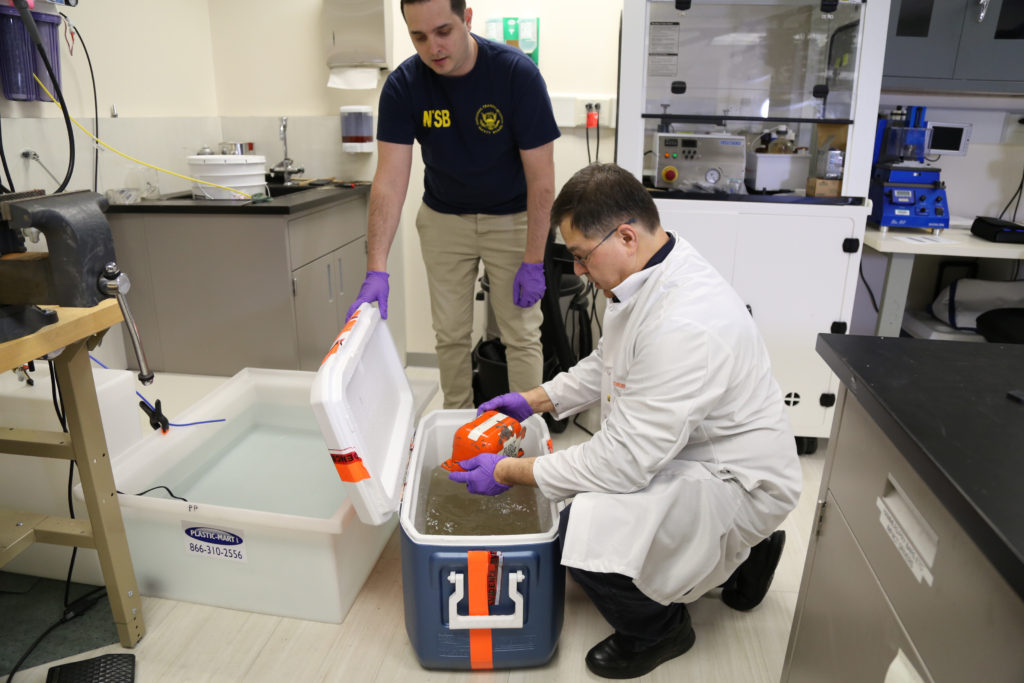Cockpit Voice Recorders provide information to accident investigators in addition to the information they can retrieve from FDR data. However, just like the FDR, the CVR improved considerably over the years, granting improved audio quality, longer recording times and greater crash survival rates.
 What is a Cockpit Voice Recorder?
What is a Cockpit Voice Recorder?
A Cockpit Voice Recorder or CVR is an aircraft recording device along with the Data Flight Recorder or FDR. The purpose of a CVR is to record audible information during a flight. With the aid of the CVR audio recordings, investigators can determine the cause of a major aircraft incident or accident.
In the past, the CVR recordings were stored on a magnetic tape configured on a single looping spool and lasted for short periods of time and up to 30 minutes. Today CVRs feature solid state memory and the audio is recorded digitally for up to 3 hours. Despite the improvements however, at times the information recorded has been found to be insufficient or incomplete.
The Black Box
What we call the Black Box in the casing that contains the CVR, with the purpose of protecting the device from enviromental hazards such as high impact, fire and water. This casing has also been improved over the years to increase its chances of retrieval even when submerged in water. For that very same reason cockpit voice recorders are colored in bright orange color.
Black Boxes on the present day not only have reduced in size, but have also been improved to house both the CVR and FDR as a single combined device called CVDR (Combined Voice and Data Recorder).
 Solid State Cockpit Voice Recorders
Solid State Cockpit Voice Recorders
The SSCVR is the current version of cockpit voice recorders. They offer better protection, audio quality and management that its predecessors.
These devices also offer better protection against shock, vibrations, and moisture and have lower power requirements, which allows the introduction of a battery (RIPS) to continue recording for a period of time on the event of electrical failure on the aircraft.
Handling the CVR data
Once powered up, the CVR is constantly recording audio in the cockpit between pilots, and overwriting older recordings but always retaining the last 2 or 3 hours of the flight.
In order to verify the audio ineligibility from the CVR, a detailed process is followed by both air and ground maintenance crews in order to retrieve the audio recordings and confirm all channels and signals required are present, free of distortions and at the correct audio gain levels. The readout requirements of a tape based CVR are different form those of a SSCVR. Verifying the operation and audio integrity of SSCVR units require the audio must be downloaded and replayed.
The CVR analysis, CVR replay and finally the CVR readout report can be provided to the operator by a third party maintenance company.

For the most part, the requirements regarding the analysis of CVR audio for maintenance purposes is the same in most countries with FDR requirements, despite the difference of content between an FDR and an CVR. Staff should be trained to properly use readout software and familiarize themselves with procedures to determine acceptable intelligibility and compliance with international and regional aviation regulations applicable to flight recorders.
Contact us today and find out how to put OSPs expertise to work for you

 Solid State Cockpit Voice Recorders
Solid State Cockpit Voice Recorders